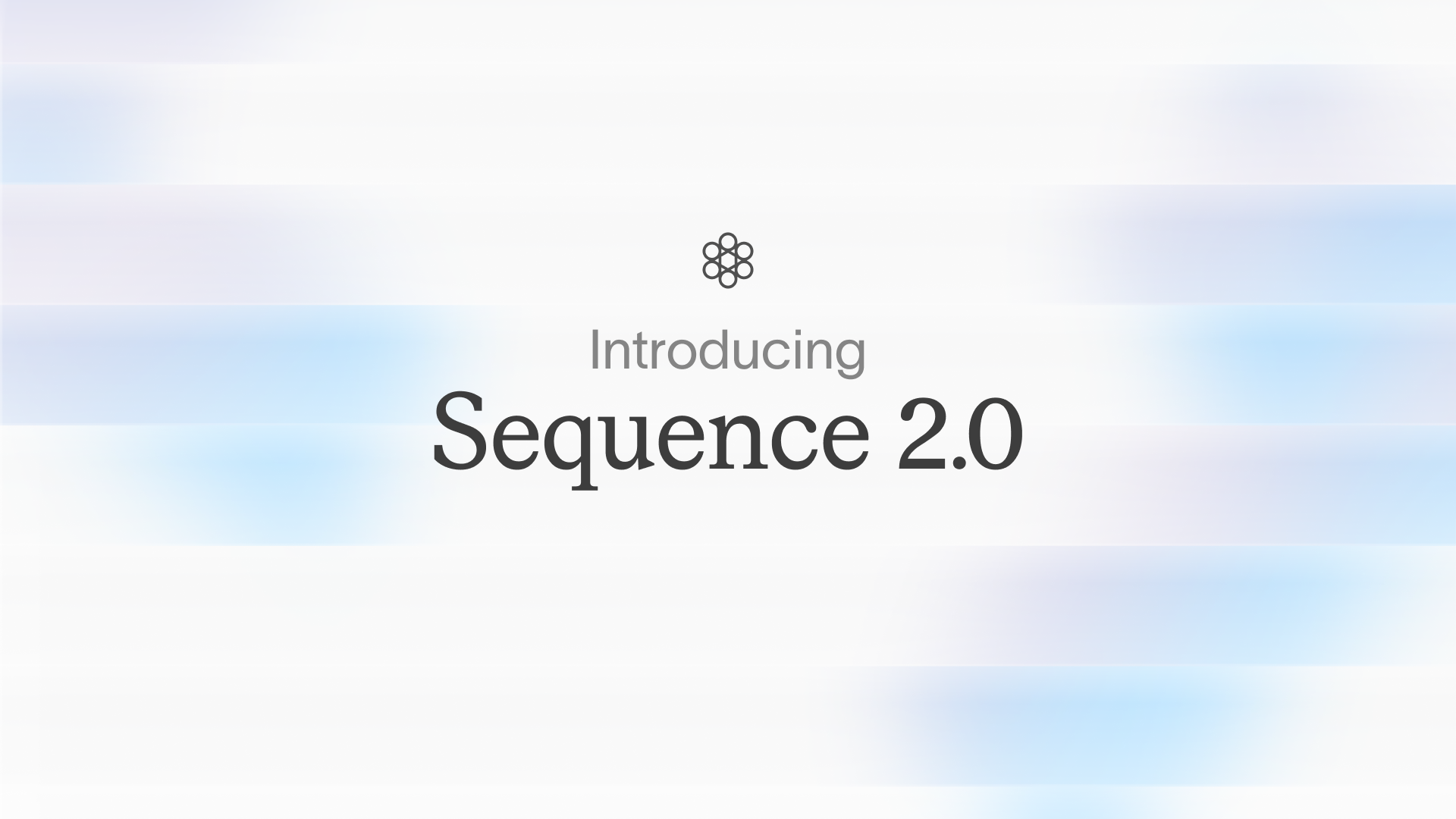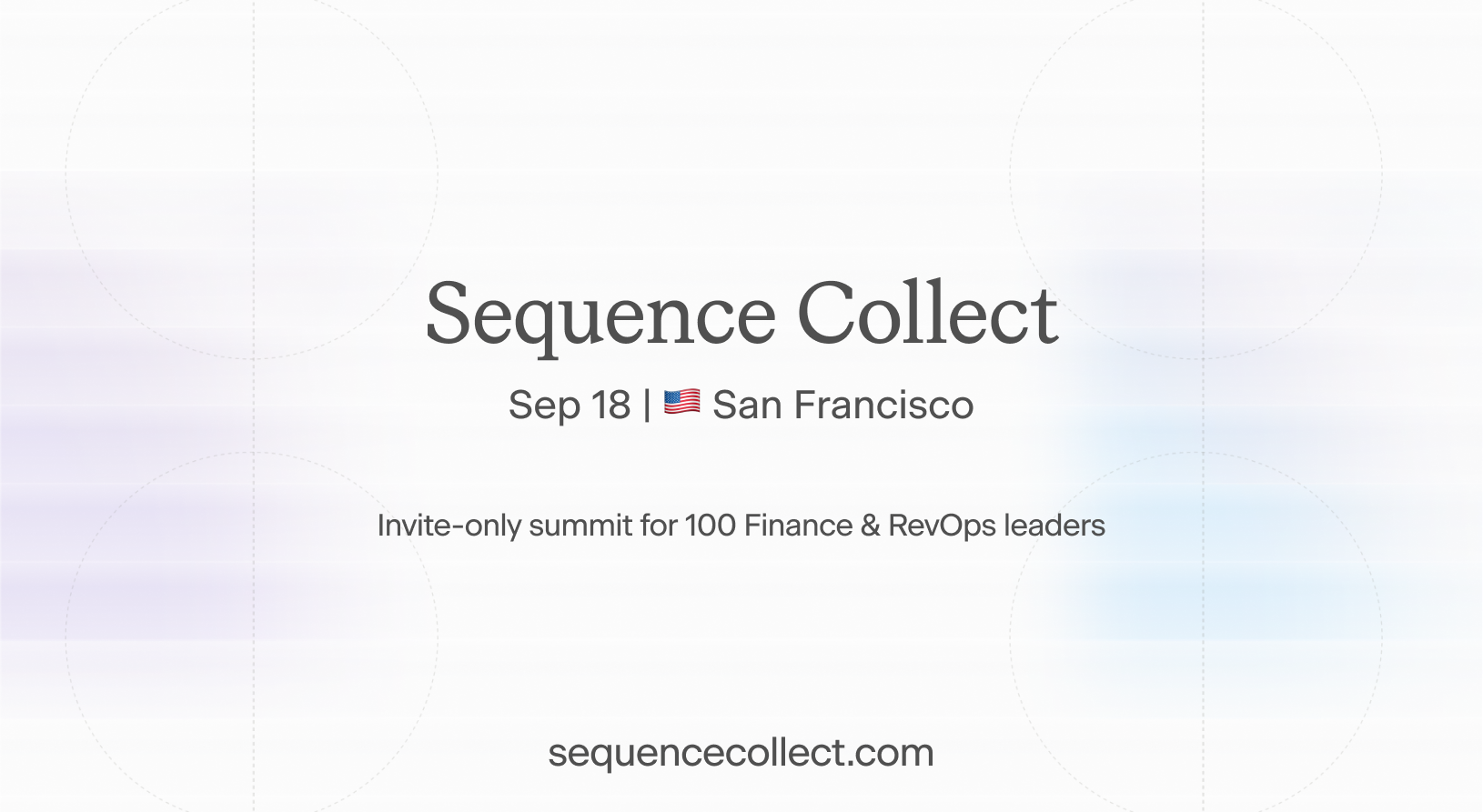Riya Grover
Building the Ramp of Revenue Management
The receivables category is due for a major overhaul: streamlined workflows to turn contracts into revenue, fewer tools, better integration with core systems like CRM and ERP, and real-time AI-driven revenue insights. Sequence is the company bringing revenue management into the new age for modern finance teams.

How Ramp simplified Spend
Tracking spend used to be messy. Trawling paper receipts, manual keying in of invoice data, manual bank payments and messy uncategorised transaction data fell part of the typical monthly routine for finance teams, taking hours of repetitive manual work to sort through.
Ramp is one of the fastest-growing startups in the world and has emerged as a leader in the spend and procurement category, solving the procure to pay workflow end to end. Ramp simplifies workflows for fina
nce teams with innovative products that eliminate the manual effort of categorizing spend and making payments, reduce errors through intelligent matching, and generate valuable insights from transaction data, thereby giving finance teams a complete solution to manage the procure to pay journey.

Ramp streamlined the spend intake piece by turning otherwise unstructured spend information into structured, categorized transaction data. Receipt data is extracted using OCR and AI to translate papers or photos into structured expense data. Similarly, invoices received from vendors can be sent to an email inbox, with automated extraction of all key invoice terms, making accounts payable a 1 click job.
More recently, Ramp has extended its seamless intake experience to procurement requests by creating easy intake forms for any employee to submit a purchase request and more recently the ability to drop in a vendor quote or contract for AI to scan and automatically generate a procurement request on behalf of the employee.

With these simple, automated intake flows, all sources of spend get turned into a structured transaction data for finance teams to work with. This approach has helped Ramp’s customers save many hours of manual finance work, and more critically has unlocked several new opportunities for workflow automation. For example a more streamlined purchase approval workflow, faster bill payments and faster processing of travel expenses.
Access to every transaction data record also gives Ramp the power to to deliver further time and cost savings. Imagine having AI scan your spend and suggest opportunities for cost savings or spot variances between purchased goods and actual charges. And soon, letting an AI agent complete all of your travel bookings for you.
Sequence is redefining Revenue Management for Finance teams
The revenue side of things is still very messy in most B2B companies. Companies start selling, their pricing models are constantly in evolution and the finance team has to keep up with accurate revenue collection, revenue recognition and compliance for new sales, upsells and renewals. Moreover many companies operate a hybrid go to market motion with a mix of self-serve and sales led business, and likely deploy a mix of pricing models across their customers and product base (subscriptions, seats, usage). In this context, tracking billing data, accurate invoicing, revenue recognition, ASC606 compliance and reporting on revenue trends become painful manual tasks, fragmented across various spreadsheets and point solutions which are hard to stitch together. It’s time for a change.
Solving price intake with a simple, automated and AI powered workflow
Capturing and structuring contract data is the key to unlocking end to end revenue automation and revenue intelligence. If you accurately capture the details of what products were sold and on which pricing and contract terms and you can solve all downstream revenue workflows.
For many teams, contracts live as PDFs in Google Drive or Salesforce. At Sequence we’ve invested in a magical experience to seamlessly capture and record the products, prices and commercial terms in a sales contract, order form or purchase order. This structured commercial data record enables finance teams to automate all of their revenue tasks including creating customer subscriptions against the exact contract terms, invoicing customers, collecting payments and recognising revenue. To achieve this, Sequence gives teams two options for price intake:
Create quotes, sign contracts and automate invoicing - from one place
Sequence sales quoting is like a notion page supercharged with pricing tools. We help companies launch pricing proposals, order forms or contracts directly from Salesforce or Hubspot. Once e-signed through a seamless workflow, pricing data is captured in a structured database for finance teams to do 1 click billing and manage other revenue related finance workflows.

Ingest contracts, automate finance workflows in minutes
Companies can send any signed contract document to Sequence’s contract inbox with automated contract extraction of key terms, assisting finance users in the workflow to set up billing and invoicing terms accurately.

Turn contract data into revenue intelligence
Sequence collects every revenue record. With every new contract or upsell, our revenue database becomes richer.
In the same way that Ramp leverages its transaction data records to deliver automations and insights, Sequence leverages its revenue database to transform the way a company understands revenue changes and takes actions on them.
Products, pricing, usage and revenue are now data assets to be leveraged by finance teams to understand the business, optimize pricing, grow revenue, guide revenue teams and improve reporting. Automations can be simple trigger based notifications such as letting sales know when usage exceeds a threshold as the account may qualify for an upgrade or notifying the account manager when a contract is coming up for renewal. Finance teams can leverage AI first insights to understand pricing and discount trends, what’s driving changes in ARR or to automatically create churn and cohort analysis reports with ease.

Just as Ramp users can create expense rules, Finance teams can use Sequence to create pricing rules and approval workflows to guide revenue teams to sell higher margin contracts.
With each new product we ship, the Sequence platform becomes more powerful, enabling our users to make new connections across datasets, such as ensuring perfectly accurate revenue revenue recognition for each custom contract sold, triggering feature entitlements for new contracts or upsells and pushing real time revenue data into a sales commission tracker.
Why hasn’t this been done before and why now?
1. Niche point solutions = data fragmentation
Historically, platforms in the revenue space have narrowly focused on point-problems like invoicing, revenue recognition or dunning, without addressing the entire lifecycle of contract ingestion, pricing management, and revenue operations in an integrated way. Because of this, businesses have been forced to cobble together multiple tools each handling a small portion of the process. This leads to inefficient finance workflows, fragmented and inaccurate data and limited visibility across the lifecycle of revenue collection and management. It’s not uncommon to see a B2B finance team working with 4+ tools to manage revenue collection, presenting a clear opportunity for consolidation:
- Configure, Price, Quote (CPQ)
- Billing and invoicing
- AR/Dunning
- Revenue recognition
Each of these tools have to understand the core underlying contract logic, sync with each other and natively connect with other core systems of record including the CRM, ERP and data warehouse, which means teams plough tens or hundreds of thousands of dollars on consultants to build custom connectors.

2. The simple subscription economy is no longer
Incumbent tools were built to support simple subscription pricing models and have been unable to accommodate the complex, evolving pricing and contract structures (usage based pricing, seats, subscriptions, trials, discounts, pricing ramps, phased deals etc) of modern B2B businesses – one of the reasons why so many companies opt to build costly in-house billing systems to ensure they can reflect the way their business sells. We’ve seen a shift in the way today’s B2B companies sell, often with hybrid pricing models across their product base with significant growth in the inclusion of usage based pricing. This requires new infrastructure to translate custom pricing and contract structures into seamless revenue management. Sequence is built with a data model to support pricing and contract structure flexibility in a first class way, so teams don’t have to find workarounds to capture, invoice and recognise revenue for the exact terms of their contract.
3. $100k+ implementations, half of which fail
Too often, CFOs are faced with massive implementation projects to streamline their receivables process. There is an ecosystem of implementation partners and consultants charging eye watering amounts for custom Netsuite tooling, bespoke billing implementations or one-off integrations – many of which fail, don’t work and require constant maintenance. Modern Finance teams deserve better. Getting started shouldn’t require companies to spend hundreds of hours with a solutions engineer just to get set up.
With Sequence, companies can set up their product catalog and translate existing contracts into automated invoicing in a day, ingesting existing contract data and ensure new contracts can be processed with speed and precision. Solving price intake removes much of the implementation hurdle and headache finance teams have historically faced.
Intelligent receivables automation for modern Finance teams
Sequence is reinventing the Revenue category much like Ramp transformed Spend. By capturing contract data at the source and turning it into structured, actionable information, Sequence empowers finance teams to manage pricing, billing, and revenue recognition with unprecedented efficiency and accuracy. With AI-driven automation, Sequence reduces the reliance on fragmented, manual processes and multiple point solutions, offering a unified platform that optimizes revenue operations from contract to collection. As the platform grows and the revenue database becomes richer, Sequence continues to unlock new opportunities for finance teams to gain insights, automate processes, and drive revenue growth. This new era of intelligent revenue management is here, and Sequence is leading the way.
Building a next-generation finance platform, fast
Sequence is purpose-designed for the new generation of Finance teams. Instead of focusing on a narrow point problem that requires customers to integrate across their stack, Sequence is building a comprehensive suite of connected modules with native CRM, ERP and Data integrations. Sequence partners with top 1% CFOs and Heads of Finance to design a world-class product experience, precision engineered for financial accuracy.
Operating across a broad surface area requires a high shipping velocity and world-class team. Each new Sequence product adds a compounding layer to the platform, making every other module in the stack more powerful. Sequence is introducing new platform wide capabilities like a workflow builder and horizontal enablers, helping modern Finance teams operate with unprecedented efficiency.

Riya Grover
Related articles

Introducing Sequence 2.0
Today, we're launching Sequence 2.0: The first AI-native revenue automation platform built from the ground up for modern finance teams. Sequence 2.0 is a complete revenue suite, including CPQ, Billing and Revenue recognition.
Riya Grover

How we use Sequence to level up pricing flexibility
Sequence is built to provide pricing flexibility for sales teams while retaining a fully automated billing workflow for finance. Here’s how using Sequence has provided us with a unique competitive advantage when configuring custom deal terms, without breaking our revenue collection workflow downstream.
Enda Cahill

Sequence Collect
Sequence Collect is the AI revenue automation conference for modern finance leaders, taking place September 18th in San Francisco. Designed for CFOs and RevOps leaders from fast-growing B2B scaleups, the event addresses critical questions like "How should we price our AI agents?" and "How far can we scale with 1 finance operator + AI?" Limited spots available at sequencecollect.com.
Riya Grover